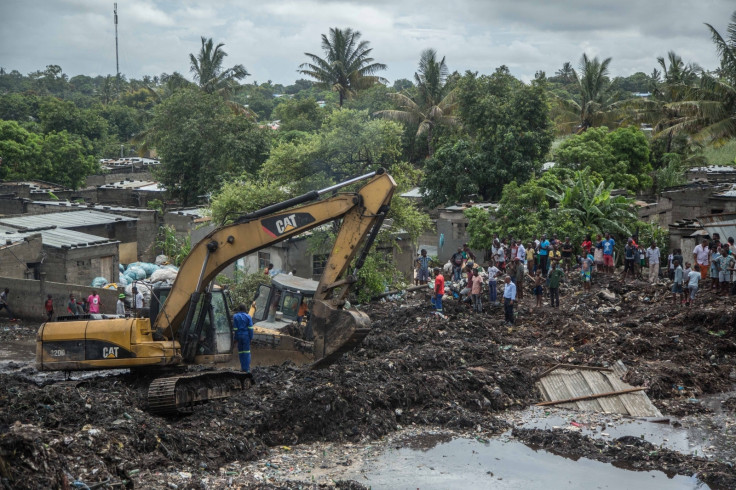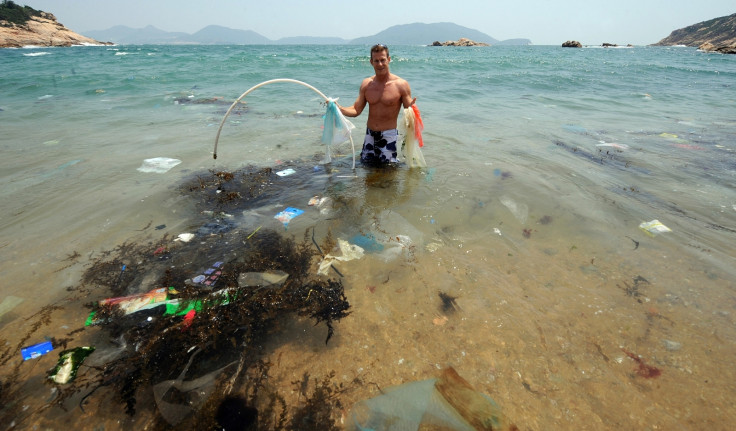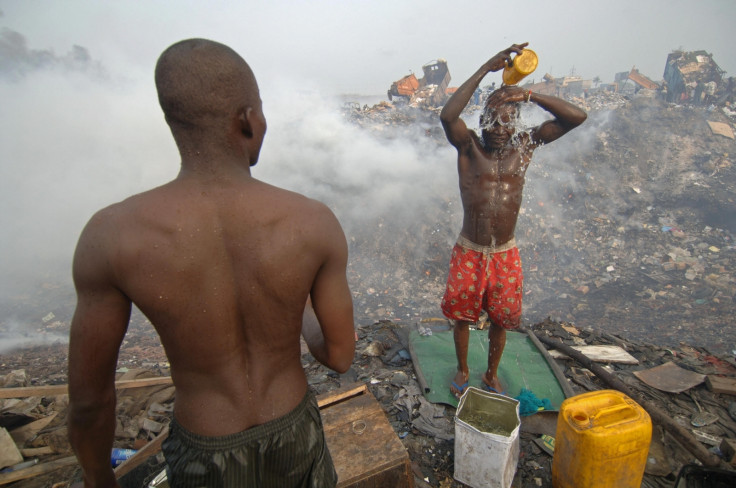Race to trash mountain: World's worst garbage dumps and the deadly risks they pose
The recent collapse of a garbage mound in Mozambique led to the deaths of at least 17 people.

Residents living on the outskirts of Maputo, the capital of Mozambique, were shaken up from their sleep at 3am local time (1am London time) on Monday (19 February) after heavy rains caused a deadly landslide at a nearby garbage dump. The accident took place at the Hulene landfill where a 15-meter-high pile of trash collapsed, causing the deaths of at least 17 people.
Rescue workers believe that the garbage — approximately three storeys high — may have buried more people and search efforts are still on. Councillor for Ka Mavota Municipal District, Despedida Rita confirmed the death toll. "Up to now 17 dead bodies were recovered. We fear more might be unaccounted for," she told reporters.
"So we will keep searching for bodies buried underneath the rubbish pile."
Seven houses were also destroyed by the collapse.
Hulene is located in one of the poorer parts of the city and according to The Associated Press, a number of illegal residential constructions were built around the dump. Locals are known to scavenge through the garbage looking for food and items to sell.
A similar landslide at Ethiopia's largest trash mountain in 2017 led to the deaths of at least 65 people while eight people in Guinea were killed when their homes got buried in trash.
IBTimes UK lists some of the world's largest garbage dumps and the enormous health risks they pose to the people who live around them.
The Great Pacific Garbage Patch
The US National Ocean Service describes the Great Pacific Garbage Patch as marine debris that has concentrated in various regions of the North Pacific over the years. All this garbage is not found in one specific location in the ocean but is spread across many areas.

While the term "garbage patch" conjures up images of an island of trash floating on the ocean, in reality, these patches are almost entirely made up of tiny bits of plastic, called microplastics. They cannot always be visible to the naked eye and can simply make the water look cloudy.
The National Geographic explains that marine debris can pose a huge risk to marine life in the region. Turtles, seals and dolphins are prone to ingesting plastics or getting strangled in the floating debris.
In the case of microplastics, the film they create on the water's surface can prevent sunlight from reaching autotrophs like plankton and algae deeper in the ocean. This could affect populations of fish that feed on them which in turn causes food shortage for apex predators.
Olusosun, Nigeria
The Olusosun landfill is a 100-acre dump in Lagos, Lagos State, Nigeria and is Africa's largest dumping ground. The site receives up to 10,000 tons of rubbish each day aside from waste from around 500 container ships.

Much of the electronic waste is treated with chemicals and creates toxic fumes which have become a cause of concern for health officials. Over 1000 homes are located around the dumpsite with most families depending on the scrap business to earn a living.
The Independent Nigeria reported that the foul smell from the site along with contamination of ground water sources has become a major issue with local communities that are urging the government to take action.
Bantar Gebang, Indonesia
The Bantar Gebang garbage dump in Bekasi, West Java, Indonesia, is spread over 280 acres and receives over 6,500 tons of waste from capital Jakarta each day. A 2017 report by the Jakarta Post claims that given the lack of waste treatment facilities, officials believe the site will be at full capacity within a decade.

Methane gas from the dump continues to be an issue and the local administration is looking to find methods to control the spread of the toxic substance while finding ways to effectively use it to convert the waste into energy
Ghazipur, India
In 2017, a garbage collapse at one of India's biggest dump sites led to the death of two people. "Just a piece of the landfill has come down; it's only one per cent of the total landfill. We had removed most of the dump and are putting it back to the site," Pradeep Khandelwal, Chief Engineer, East Delhi Municipal Corporation had told reporters at the time.

The dump is estimated to be spread over 70 acres and is 50 metres high. Being an un-supervised site, there is not official segregation of trash conducted here, causing additional problems of chemical exposure and toxic leaks. Fires at the dump site are also responsible for contributing to capital New Delhi's air pollution. The city has been facing hazardous levels of smog that has triggered widespread respiratory problems along with eye and skin infections.






